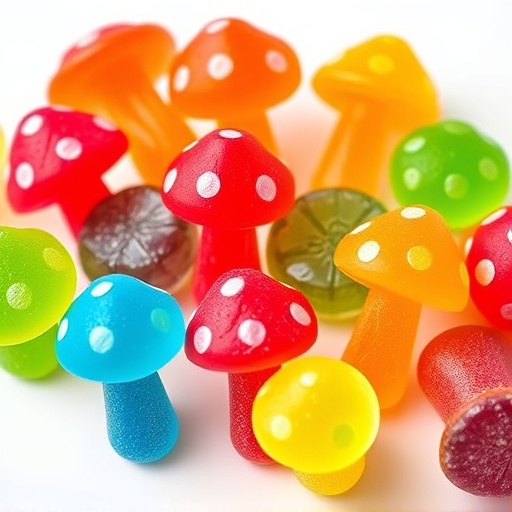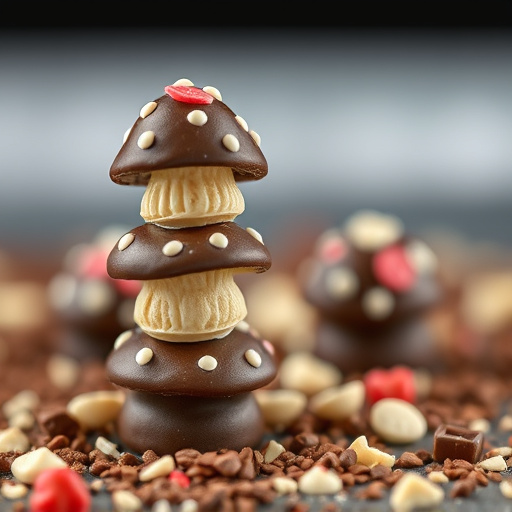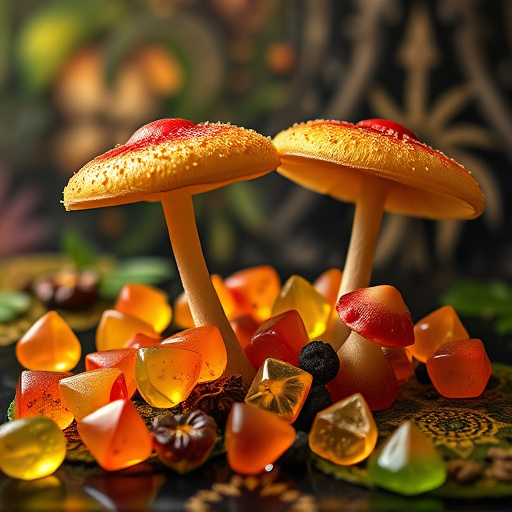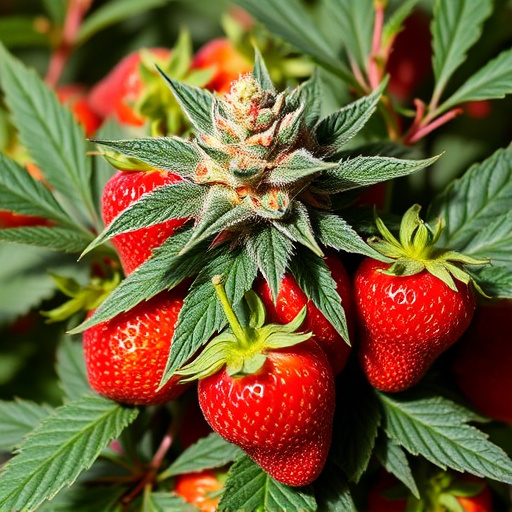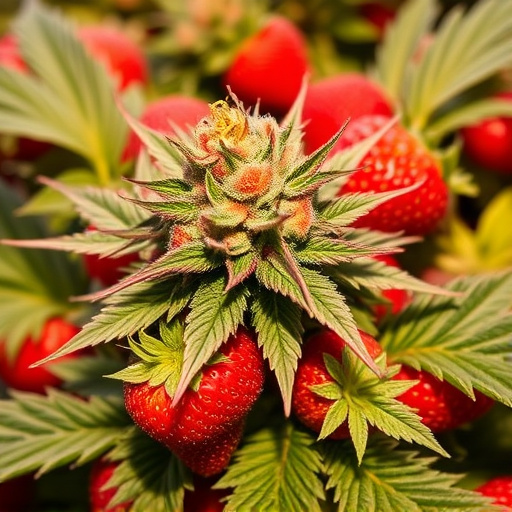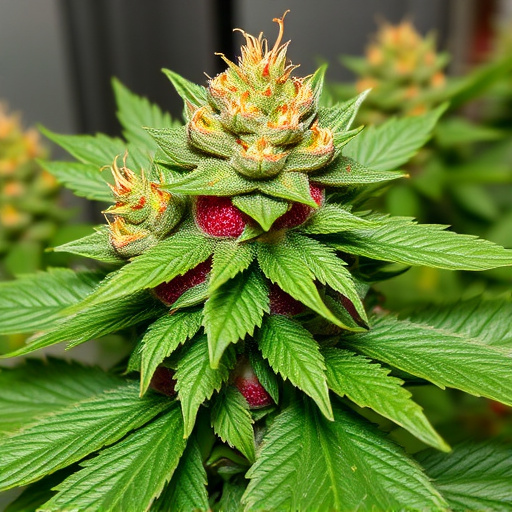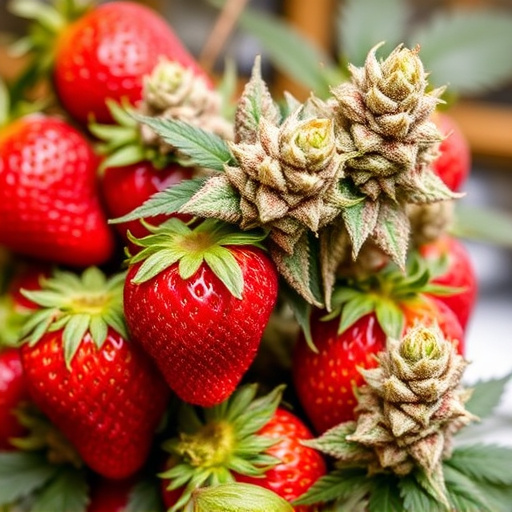Cannabis flowers' captivating pigmentation, notably in strawberry strains, results from complex chemical reactions triggered by environmental cues like light conditions and plant stress. These reactions produce anthocyanins, responsible for reddish-purple hues found in fruits and vegetables. Strawberry strains offer balanced THC and CBD profiles, ideal for relaxation and pain management, with unique fruity and sweet flavors. Growers meticulously control lighting, temperature, and nutrients to achieve the desired pigment levels in these visually stunning and therapeutically valuable strawberry cannabis strains.
Discover the captivating transformation of cannabis flowers, as their colors evolve from green to vibrant hues. This phenomenon is not just aesthetically pleasing; it’s a sign of chemical changes within the plant. In this article, we explore the science behind cannabis pigmentation, focusing on the allure of strawberry cannabis strains. Uncover how environmental factors play a pivotal role in shaping these striking visual variations, enhancing not only appearance but also the potent effects these strains offer.
- The Science Behind Cannabis Pigmentation: Unraveling the Chemical Composition
- Strawberry Cannabis Strains: A Visual Delight and Potent Effects
- Environmental Factors and Their Impact on Flower Color Transformation
The Science Behind Cannabis Pigmentation: Unraveling the Chemical Composition
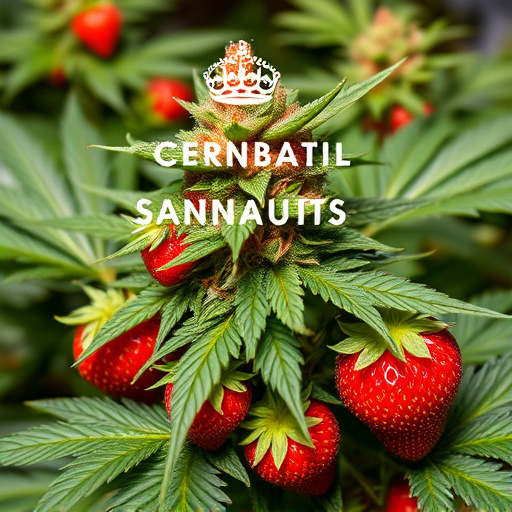
The science behind cannabis pigmentation is a fascinating aspect of this complex plant. Cannabis flower colors change during the blooming process due to a combination of chemical compounds and natural processes. The vibrant hues, ranging from deep purple to bright yellow, are not merely aesthetic; they’re indicative of the plant’s unique chemical composition.
In strawberry cannabis strains, for instance, the reddish-purple shade is attributed to the presence of anthocyanins, a type of pigment responsible for giving fruits and vegetables their colors. These compounds are produced in response to environmental stimuli, such as changing light conditions or stress from pests or disease. As the cannabis plant matures, the balance of these pigments shifts, leading to the distinctive color changes we see in different strains. Understanding this intricate interplay between chemistry and environment offers insights into both the cultivation and appreciation of cannabis flowers’ beauty.
Strawberry Cannabis Strains: A Visual Delight and Potent Effects
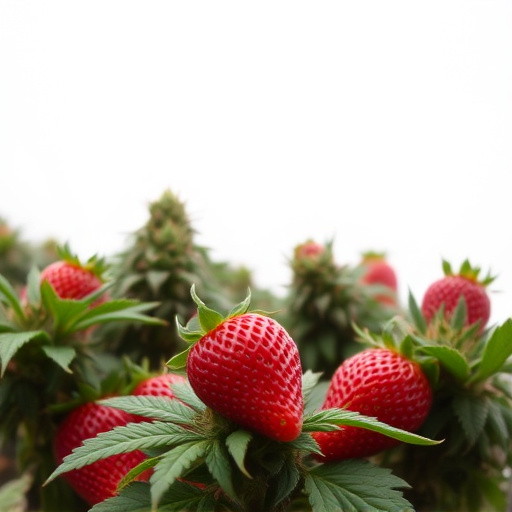
Strawberry cannabis strains are not just a visual delight but also offer potent effects that cater to both aesthetic and therapeutic preferences. The vibrant red hue characteristic of these strains is more than just an attractive feature; it’s a result of high levels of anthocyanins, powerful antioxidants found in many plants, including cannabis. These compounds contribute to the strain’s unique flavor profile, often described as fruity and sweet, with hints of strawberries.
Beyond aesthetics, strawberry cannabis strains are known for their balanced THC and CBD profiles, making them suitable for a wide range of users. The combination provides a pleasant high without overwhelming sensations, ideal for relaxation and pain management. Moreover, the visual appeal of these strains adds to the overall experience, making them a favorite among those who appreciate both the science and art of cannabis cultivation.
Environmental Factors and Their Impact on Flower Color Transformation

The transformation of cannabis flowers from vibrant green to rich hues like purple, red, or even orange is a captivating process influenced by various environmental factors. These factors play a pivotal role in determining the final color palette of strawberry cannabis strains and other varieties. One key element is light exposure; specific wavelengths of light can trigger biochemical reactions that lead to pigment production, resulting in the striking color changes. For instance, cooler temperatures and lower light intensity can encourage the development of anthocyanins, pigments responsible for red and purple tones.
Additionally, nutrient availability in the growing medium significantly impacts color. Deficiencies or imbalances in essential nutrients like nitrogen, phosphorus, and potassium can influence the plant’s ability to produce certain pigments. Strawberry cannabis strains, known for their unique colors, often require precise environmental control to ensure the desired hue. Growers meticulously adjust lighting, temperature, and nutrient levels to foster optimal conditions for the flowers’ color transformation.
Cannabis flower color changes, influenced by both scientific factors and environmental conditions, offer more than just aesthetic appeal. Strawberry cannabis strains, for example, not only provide potent effects but also showcase the intricate interplay between genetics and chemistry. Understanding these transformations allows cultivators to fine-tune growing conditions, enhancing the overall quality and experience of cannabis products. Environmental factors, from light exposure to temperature, play a crucial role in this process, making sustainable cultivation practices essential for optimizing flower color and potency.
